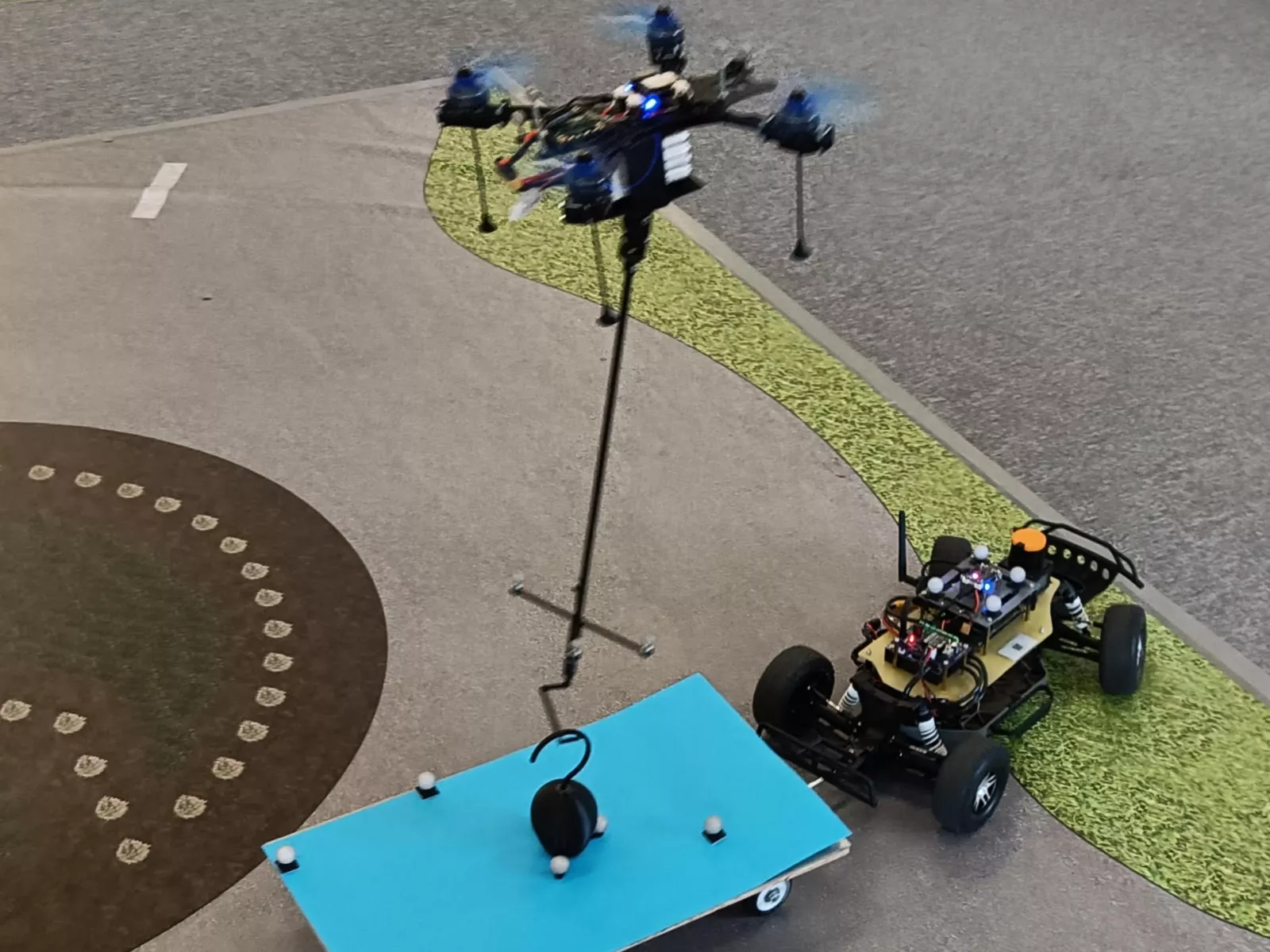
When we hear of delivery drones, many people imagine a future scenario: hovering devices delivering orders directly to the balcony or front gate. But the reality is much more complex than that, and the biggest challenge is to ensure that these devices can navigate autonomously, safely and reliably in an often unpredictable urban environment. In this area, experts at the Systems and Control Laboratory (SCL) at HUN-REN SZTAKI have achieved world-class results by developing intelligent control solutions that enable drones to react to changes in the environment in real time – all with minimal energy consumption.
A drone that sees, thinks and decides
For a drone to fly safely, it needs to know where it is, what's around it and where it should go. This doesn't just require pre-setting a flight path – it requires lightning-fast, improvised adaptation. A bird flying by, a crane erected for construction, or even a sudden gust of wind can override the original route plan. Autonomous drones can use a variety of sensors to help them find their way: GPS, accelerometers, yaw rate sensors, cameras, and LIDARs, which work like radars but use lasers instead of radio waves to detect objects and obstacles in the environment.
This brings us to one of the fundamental dilemmas of the technology: we can equip the drone with the best possible sensors, but they are heavy, consume a lot of energy and make operation more complicated. Moreover, a drone can only carry a limited weight and has a finite battery capacity. That's why smart, efficient control solutions are needed – the goal is not to detect and record every bit of data, but to detect and process just enough to make fast, safe decisions.
Researchers at HUN-REN SZTAKI SCL are developing software systems that can make fast and reliable decisions based on the available data. "These systems not only plan ahead, but also react to the slightest unexpected change and continuously replan the drone's movements," says Tamás Péni, lead researcher at SCL and Autonomous Systems National Laboratory. - It's not enough to know where the obstacle is at a given moment, the vehicle must also assess how the object might move in the future and adjust its own movement accordingly, while maintaining appropriate safety distances."
To achieve this, the flight path is designed on two levels. One is the global level, which is like driving our car to our destination based on GPS. Based on the maps and information available, the drone plans its route in advance in the same way. However, when an unexpected situation arises – for example, an obstacle gets in front of the drone – local planning comes into play, the drone changes its trajectory and, if necessary, adjusts its entire remaining route. If several drones are in the air at the same time, they can communicate with each other. If, for example, one of them notices a new obstacle – e.g., a crane that's not marked on the map – it can immediately share that information with the other drones. In this way, all the vehicles work on a single, real-time "map" and are all able to reach their destination safely.
The drone equipped with the system developed by HUN-REN SZTAKI researchers is able to autonomously pick up a package from a moving vehicle using a simple hook and deliver it to another vehicle, also on the move – with centimeter accuracy. As we know from the fairground fishing game, this is no easy feat, even when controlled by our own hands. Without human control, with a fully autonomous drone, it can only be carried out in the Hungarian research laboratory. "Other international experiments use heavier and more complex active gripping mechanisms such as needles, electromagnets or gripping levers, while our solution is not only technologically simpler but also more energy efficient ," says Roland Tóth, lead researcher at SCL and Autonomous Systems National Laboratory. - This allows cheaper, smaller drones to perform complex tasks, and a hook can be relatively easily mounted on any package."
Don't order pizza from drones just yet
Although parcel delivery drones are most often imagined in urban environments, the first truly operational systems will not be found on the streets of big cities. There is a simple reason for this: rural, sparsely populated environments, or even enclosed spaces and warehouses, are more predictable.
Some countries have already launched the first services where drones deliver medicine, food or small packages, but these typically operate in stable weather conditions, with low buildings and simple air traffic. In such environments, there is no need for high precision or rapid changes of direction.
In contrast, the kind of control that allows a drone to deliver a package safely and autonomously, even between moving vehicles, is not yet part of everyday practice. The real-time and centimeter-precise motion control required for such tasks is where the work of HUN-REN SZTAKI researchers is leading the way on a global scale.
Industrial or logistics facilities can be the best learning ground for these developments: in such enclosed spaces, there are no random movements, no birds or passers-by, and no wind or fog to affect flight. They thus provide an ideal environment for the development of precision autonomous flight, where drones can prove their reliability in a real challenge but in a controlled way.
The above press release has received nearly 30 online publications in Hungarian professional and other media, such as itbusiness.hu, itcglobal.hu, newtechnology.hu, autoszektor.hu, hungarytoday.hu, dailynewshungary.com, autopro.hu, iotmagazin.hu, tozsdeforum.hu, mmonline.hu, muszaki-magazin.hu, iparicegek.hu, insidernews.hu, gyartastrend.hu.